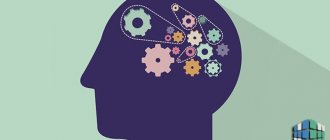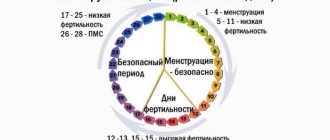Human development is a continuous process starting from birth to death. At every moment of life, every person is in a state of personal evolution. Physical changes drive much of the process as our cognitive abilities develop and decline in response to brain growth in childhood and decline in function in old age. Psychosocial development also depends significantly on physical development, as our changing bodies and brains, together with our environment, shape our identity and our relationships with others.
Physical development
Although different scientists define physical development in slightly different ways, most generally break the process down into eight stages, which include:
- Infancy;
- Early childhood;
- Middle childhood;
- Late childhood;
- Adolescence;
- Early adulthood;
- Average age;
- Old age.
In recent years, as people have lived longer, some have added "late aging" to the list. At each stage, certain physical changes occur that affect a person's cognitive and psychosocial development.
Grandfather with granddaughter
What did our ancestors know and were able to convey to us about cyclicality?
According to ancient Indian philosophy, the historical process of human development is divided into four eras: the Golden Age, the Silver Age, the Copper Age and the Iron Age, which cyclically replace each other. And the heyday of the Golden Age (the heyday of culture, philosophy, science, art and the spiritual sphere) was replaced after the Silver and Copper Age by the Iron Age - the age of materialization, which is characterized as a time of brute force, cruelty, greed, insatiability of desires and unbridled passions.
Thus, the 12,000-year cyclicity has always existed, and we know this thanks to facts from the history of past civilizations. Information about this has been preserved in various ancient scriptures, sacred buildings, and sacred texts of almost all peoples of the world.
Now let's look at cyclicity from the point of view of modern science.
Cognitive development
Cognitive development refers to the acquisition of the ability to reason and solve problems. The main theory of cognitive development was developed by Jean Piaget, a Swiss developmental psychologist. Piaget divided children's cognitive development into four stages, from birth through adolescence. A child who successfully progresses through the stages moves from simple sensorimotor responses to the ability to categorize and create a series of objects and eventually engage in hypothetical and deductive reasoning, according to the "new dictionary of scientific biography."
Nothing lasts forever in this world
Any matter is temporary and has its own life cycle (path), which lies between two events - birth and destruction. It has its own characteristics, laws, and phases of development (acceleration and deceleration). And the same cyclical nature is characteristic of the changes that occur in human society, as well as in states, in various cultures, and in civilizations in general...
The life cycle of the Sun, the biosphere, of which man is a part, is also finite. Cyclicity is also characteristic of the Universe itself, reflecting the periodicity of birth and death.
The birth of the Universe, galaxies, the birth of earthly civilizations, life processes at all levels: in society, nature, information systems - are also subject to cyclicity.
And humanity has also been going through all these cyclical processes for many centuries.
Psychosocial development
The primary theory of psychosocial development was created by Erik Erikson, a German developmental psychologist. Erikson divided the process of psychological and social development into eight stages that correspond to the stages of physical development. At each stage, according to Erickson, the person faces a psychological conflict that must be resolved in order to progress. Moving from infancy to old age, these conflicts are trust versus mistrust, autonomy versus shame and doubt, initiative versus guilt, industry versus inferiority, identity versus role diffusion, proximity to isolation, fertility.
Needs and interests
Pyramid of human needs (according to Maslow)
To ensure his life and for the purpose of his development, a person satisfies various needs, which are called requirements. Need
- This is a person’s need for something.
A perceived need becomes the motive for human activity. The needs of each next level become urgent when the previous ones are satisfied. A special feature of a person is the ability to rank
his needs in accordance with his principles and beliefs.
Human needs are limitless. Reasonable needs
are needs that help the development of truly human qualities in a person: the desire for truth, beauty, knowledge, the desire to do good to people, etc.
Imaginary needs
are artificially created by man, the implementation of which can be dispensed with (for example, smoking).
Needs underlie the emergence of interests and inclinations. Interest
is a person’s purposeful attitude towards an object.
Inclination
is an orientation towards a certain activity. A person’s interests and inclinations express the direction of his personality, which determines his life path, the nature of his activities, etc.
Interdependent processes
Development is the product of a complex interaction of biological, psychological and social influences. As children develop physically, gaining greater psychomotor control and increasing brain function, their cognitive processes become more complex, meaning they become more adept at thinking and influencing their environment. These physical and cognitive changes, in turn, enable them to develop psychosocially, developing an individual identity and interacting effectively and efficiently with others. Thus, as described, human development is a lifelong process of growth, maturation and change.
Body type and physical activity
The shape of the human body is genetically determined, but most people do not have a clearly defined body type and belong to intermediate types. The first signs of body type appear at 6–7 years of age, and its final formation occurs during puberty. Subsequently, the body type changes slightly. Parents, when introducing their child to sports activities, should not fight nature. If the baby is overweight, blushes and sweats when running, and cannot catch up with his peers, then he is probably stronger and it is necessary to develop his strength qualities first of all. A thin and tall child, inferior in strength to his peers, is probably faster and more dexterous, and he should be oriented towards activities that develop precisely these qualities.
Consequences
The importance of physical, cognitive and psychosocial development becomes apparent when a person fails to successfully meet one or more developmental milestones. For example, a child who fails to achieve physical developmental milestones may be diagnosed with developmental delay. Likewise, a child with a learning disability may not be able to cope with the complex cognitive processes of a typical adolescent. A middle-aged adult who fails to successfully resolve Erikson's stage of fertility versus stagnation may experience "profound personal stagnation, masked by a variety of escapisms such as alcohol and drug abuse and sexual and other problems." Thus, it is important for all people as they navigate the developmental challenges they face at every age.
Human development
Consciousness
Consciousness
- this is a form of mental reflection of reality and the ability to purposefully, generally and evaluatively reflect objective reality in sensory and logical images.
| Structure of consciousness | |||
| perception by the senses of the surrounding world and oneself (cognition and self-knowledge) | logical-conceptual abilities for rational cognition and knowledge obtained on their basis (understanding the essence of objects) | emotional components (sphere of personal experiences, memories, premonitions) | value-semantic components (the sphere of higher motives of activity, its spiritual ideals, the ability to form and understand them) |
Properties of consciousness:
– activity (reflects the world purposefully; serves as the basis for human transformative activity); – selectivity (differences in content both at the personal and at the social level); – subjectivity; - creative beginning.
Unconscious
– phenomena, processes, properties and states that influence human behavior, but are not realized by him.
Manifests itself in slips of the tongue, slips of the tongue, fantasies, dreams, dreams. Social (collective) consciousness
is the consciousness of a group of society, public opinion.
Relatively independently, it is spread by education, the media, political parties and social movements. Self-awareness
is a person’s awareness of his actions, feelings, thoughts, motives of behavior, interests, position in society, awareness of himself as an individual capable of making decisions and being responsible for them.
Self-knowledge
is the study by an individual of his own mental and physical characteristics.
Occurs in the process of activity and communication. Self-esteem
is an emotional attitude towards one’s own image (always subjective). Self-esteem can be realistic (in people oriented towards success), unrealistic (inflated or underestimated in people oriented towards avoiding failures).
Behavior
- a set of human actions performed by him over a relatively long period under constant or changing conditions.
Behavior consists of actions. An act
is an action considered from the point of view of the unity of motive and consequences, intentions and deeds, goals and means.
What influences human development
Genetic, environmental and psychological factors and disease can influence both a child's cognitive development and physical growth. That's why parents, doctors, and teachers must regularly assess children's developmental patterns over many years to ensure children reach certain developmental milestones.
Genetic factors
Biology plays an important role in the healthy development of a child. Genes are a biological risk factor that cannot be changed. However, although a child's genetic background may predispose her to certain inherited diseases and disorders, early interventions can improve the outcome that these risk factors may have on the child's physical and cognitive growth and development. This is especially important when dealing with genetic conditions that cannot be prevented.
Environmental influence
There are other biological risk factors that can affect a child's development and growth, directly or indirectly. Tobacco, alcohol, malnutrition, medications, recreational drugs or other chemicals can affect fetal growth. Not only can these substances cause birth defects, but they can also affect a person's cognitive development in later stages of development. Unfortunately, the effects of these risk factors on a child's learning and behavior may not be apparent for many years.
Disease
Acute and chronic illness often pose an increased risk of developing additional health problems along with emotional and behavioral problems. Physical disabilities can also lead to social isolation, which can have a significant impact on a child's education and, in turn, affect a person's ability to secure employment in adulthood. Along with the physical and cognitive limitations that a child may face due to the disease, these impairments can interfere with the child's ability to communicate and interact socially with their peers. This can ultimately lead to the child becoming socially stigmatized, which can have further negative effects on the individual's physical health.
Baby care
Researchers measure children's physical, social, emotional and behavioral development at frequent intervals to predict the impact of maternal and non-maternal care on a child's cognitive development. The study results support the idea that the quality of care provided is a strong predictor of a child's cognitive abilities and social competence. Maternal care appears to be the strongest predictor of success.
Psychological factors
Parenting style is another factor that influences a person's cognitive development. Parental values and beliefs influence how a child understands what is happening around him. While some parenting styles may be unresponsive to the child's needs and require conformity, others encourage academic achievement, self-confidence, independence and maturity.
Social influences
Social relationships play another important role in a child's cognitive development. Social cognition is seen as key to the learning process because learning requires the child to be able to interact effectively with others. Play is one of the first social interactions that contributes to a child's ability to learn. Later, when the child participates in various social activities with other children, he learns to solve problems. Cultural influences also influence a child's cognitive development, with one of the most persistent cultural influences being the school system.
Lack of stimulation
Cognitive development, defined as the development of intelligence, conscious thought, and problem-solving ability, begins in infancy and continues into adulthood. Genetically, babies are born with a specific cognitive structure, but it is the sights and sounds of experience that help them reach their specific genetic potential. Brain growth occurs when the senses are stimulated. From birth to age eight, young brains are particularly focused on learning and making connections. A learning environment filled with love, warmth or stress and conflict also affects cognitive development.
Plastic
The baby's brain is born with many tools at its disposal, but very little information. He is able to cry, eat, sleep and remain alert. Although he is tiny, he encounters a world of knowledge that must be gained through experience. This power of flexibility, called “plasticity” by neurologists, gives every child the gift of possibility. Plasticity can be a blessing, a curse, or somewhere in between, depending on the child's circumstances. Given a life filled with enriching experiences that stimulate all the senses, a child has the ability to realize his or her full potential. Living without the necessary stimulation to stimulate neuronal growth can stunt a person's cognitive development.
Experience
Cognitive development depends on stimulation provided through the senses. When any of the five senses—touch, sight, sound, taste or smell—is activated, electrical activity occurs in the brain. Each sensory experience excites neural circuits, thereby creating stronger connections. Learning occurs when neural circuits are strengthened through repetition. Over time, other neural circuits become inactive due to lack of use. These inactive circuits are often eliminated in a process called "pruning." Pruning simplifies neural processing, allowing stronger circuits to operate more efficiently. Through pruning, children can practice walking, talking and other skills.
Relationship
Perhaps the most important and often overlooked aspect of cognitive development is the quality of human relationships. From infancy, the child learns to obtain what he needs through acts of communication. The speed and quality of the human response refines the connection. Loving touch, prompt response, and positive verbal feedback excite rudimentary neural pathways. The act of describing your actions, explaining details of the world and taking the time to show, experience, feel, smell and listen to what is around you provides your child with a wealth of information. These early forms of communication create the healthy social bonds and scaffolding needed to support verbal acquisition and emotional control, both of which are key in cognitive development.
Abuse and neglect
A childhood deprived of sensory stimulation does little to help the brain function. Abuse and excessive stress cause similar deficits, placing such a demand on survival that little time or energy is devoted to intellectual development. Long-term effects of abuse and neglect include decreased brain function, anxiety and panic disorders, as well as attention and memory dysfunction.
The World History
All this was impossible without the use of direct violence. Workers brought in from outside could only be slaves. The considered method of increasing the productivity of social production was the establishment of exogenous (from the Greek exo - outside, outside) slavery. Only a constant influx of slaves from outside could make possible the emergence of an independent mode of production based on the labor of such dependent workers.
For the first time, this method of production was established only during the heyday of ancient society, and therefore it is usually called ancient. In Chapter VI “Main and Minor Methods of Production” it was called servar.
Thus, a necessary condition for the existence of ancient society was the continuous pumping of human resources from other sociohistorical organisms. And these other sociors had to belong to types different from this one, and preferably to a pre-class society.
The existence of a system of societies of the ancient type was impossible without the existence of a vast periphery, consisting primarily of barbarian sociohistorical organisms.
Continuous expansion, which was a necessary condition for the existence of server societies, could not continue indefinitely. Sooner or later it became impossible. The demographic method of increasing the productivity of social production, as well as the temporal one, was a dead end.
Ancient society, just like political society, was unable to transform into a society of a higher type. But if the political historical world continued to exist almost to the present day and after leaving the historical highway as an inferior one, then the ancient historical world disappeared forever. But, dying, ancient society passed the baton to other societies.
The transition of humanity to a higher stage of social development again occurred through what was called above formational super-elevation, or ultra-superiorization.
The era of the Middle Ages (VI-XV centuries).
The Western Roman Empire, undermined by internal contradictions, collapsed under the onslaught of the Germans. There was a superposition of Germanic pre-class demo-social organisms, which belonged to a proformation different from the protopolitan one, namely protomilitomagnar, on the fragments of the Western Roman geosocial organism. As a result, on the same territory, some people lived as part of demosocial pre-class organisms, while others lived as part of a half-destroyed class geosocial organism.
Such coexistence of two qualitatively different socio-economic and other social structures could not last too long. There had to be either the destruction of demosocial structures and the victory of geosocial ones, or the disintegration of geosocial ones and the triumph of demosocial ones, or, finally, a synthesis of both.
On the territory of the lost Western Roman Empire, what historians call the Romano-Germanic synthesis took place. As a result, a new, more progressive mode of production was born - feudal and, accordingly, a new socio-economic formation.
A Western European feudal system emerged, which became the center of world-historical development.
The ancient era was replaced by a new one - the era of the Middle Ages. The Western European world system existed as one of the zones of the preserved, but at the same time rebuilt, central historical space. This space included the Byzantine and Middle Eastern zones as an internal periphery.
The latter as a result of the Arab conquests of the 7th-8th centuries. expanded significantly to include part of the Byzantine zone and became an Islamic zone. Then the expansion of the central historical space began at the expense of the territory of Northern, Central and Eastern Europe, filled with pre-class sociohistorical organisms, which also belonged to the same proformation as the German pre-class societies - protomilitomagnar.
These societies, some under the influence of Byzantium, others - Western Europe, began to transform and turned into class sociohistorical organisms.
But if ultra-superiorization occurred on the territory of Western Europe and a new formation appeared - feudal, then a process took place here, which was called above literalization.
As a result, two similar socio-economic paraformations arose, which, without going into details, can be conditionally characterized as parafeudal (from the Greek.
pair - near, about): one included the sociors of Northern Europe, the other - Central and Eastern. Two new peripheral zones of the central historical space emerged: Northern European and Central-Eastern European, which included Rus'. In the outer periphery, primitive societies and the same political historical arenas continued to exist as in the ancient era.
As a result of the Mongol conquest (XIII century), North-Western Rus' and North-Eastern Rus', taken together, found themselves torn out of the central historical space.
The Central-Eastern European zone narrowed to Central European. After getting rid of the Tatar-Mongol yoke (XV century), Northern Rus', which later received the name Russia, returned to the central historical space, but as a special peripheral zone - Russian, which later turned into Eurasian.
Modern times (1600-1917).
On the verge of the 15th and 16th centuries. capitalism began to take shape in Western Europe. The Western European feudal world system was replaced by the Western European capitalist system, which became the center of world-historical development. The Middle Ages were followed by modern times. Capitalism developed in this era both inward and outward.
The first was expressed in the maturation and establishment of the capitalist structure, in the victory of the bourgeois socio-political revolutions (Dutch 16th century, English 17th century, Great French 18th century).
Already with the emergence of cities (10th-12th centuries), Western European society embarked on the only path that was capable of ensuring, in principle, the unlimited development of productive forces - the growth of labor productivity through the improvement of production technology.
The technical method of ensuring the growth of productivity of social production finally prevailed after the industrial revolution, which began in the last third of the 18th century.
Capitalism arose as a result of the natural development of the society that preceded it in only one place on the globe - in Western Europe. As a result, humanity was divided into two main historical worlds: the capitalist world and the non-capitalist world, which included primitive (including pre-class), political and parafeudal societies.
Along with the development of capitalism in depth, it developed in breadth.
The capitalist world system gradually pulled all peoples and countries into its orbit of influence. The central historical space has turned into a global historical space (worldspace). Along with the formation of the world historical space, capitalism spread throughout the world and the formation of a global capitalist market.
The whole world began to turn into capitalist. For all socio-historical organisms that have lagged behind in their development, no matter at what stage of evolution they lingered: primitive, politaristic or parafeudal, only one path of development became possible - to capitalism.
The history of humanity as a result of the development of desires
Reflecting on the solution to the purpose of human existence, scientists and philosophers have put forward various contradictory hypotheses, and yet the problem remains insoluble - is humanity developing according to a certain program or is its path spontaneous and has no final goal.
There are several approaches to interpreting the historical process.
History is viewed as a sequence of events, dynasties, wars and legislations. History is usually taught in this form in schools.
The Marxist economic approach is widely known, according to which the course of history is determined by the method of production of goods.
The method of production entails a change in the country's social institutions - its ideology, ethics, morality.
Sigmund Freud founded a method that explains history as the result of the suppression of subconscious impulses. The approach links the forms of culture as derivatives of the success of impulse control.
O. Spengler and A. Toynbee consider schemes for the development of civilization.
The lifespan of a civilization, in their opinion, depends on the ideas and ideals on which it is based. Such a comprehension of history seeks to reveal the internal sources of development of societies, trying to discover their inherent features.
The progress of science and technological achievements have not led humanity to confidence in its future. On the contrary, our lives are filled with a premonition of disaster; we are aware of the environmental danger threatening the planet. In this inconsistency of existence, something mysterious is hidden, a certain secret of a person’s destiny, when the growth of egoistic desire stands in the way of his boundless desire for the improvement of existence and creative growth.
He, mastering the laws of nature, expanding the boundaries of knowledge of the universe, tries in vain to understand the meaning of his existence.
In the modern world, the contradictory properties of human nature and the versatility of his nature are more noticeable.
Logical processing and generalization of factual material from observations and empirical research allows one to penetrate into the depth of the content and identify patterns of development. In our description of the historical process, we tried to use a macro-anthropological approach based on the science of Kabbalah. This approach to studying the interaction of the “man-nature” system is currently gaining great importance as an interdisciplinary means of studying integral phenomena of nature, society, group and individual.
We can say that the subject of our research is the study and description of the most effective forms of interaction between people in society, which would most optimally contribute to the process of natural development of man, nature and society, leading to the creation of conditions for the formation and development of an optimal form of coexistence of external and internal forces of development nature.
Children's development stages
Human development is the process of becoming mature, both physically and emotionally. This process takes many years and a person goes through many stages of growth to reach adulthood, the final stage of development. Humans are complex creatures, and each stage of growth involves physical, social, emotional, and cognitive development.
Baby
Infancy is the age of up to 1 year. Babies are completely dependent on another person, often the mother, to care for them. They cannot walk or talk and need help eating. During this first year of life, significant developmental changes occur.
There are four main categories of infant development.
- Social development occurs when a child begins to recognize and interact with other people.
- Although babies cannot speak, they begin to develop their language skills as they begin to understand and express their thoughts.
- Babies make huge strides in the gross motor learning skills of holding their head and sitting, crawling and pulling themselves up.
- Small motor skills develop, including reaching and grasping objects.
Baby starting to walk
Infants become toddlers between the ages of 1 and 2.5 years. Toddler is an appropriate name since at this stage of development they begin to walk but are unsteady on their feet. Toddlers learn many new skills, including walking, talking, problem solving and social skills. One of the most important milestones a baby strives for is gaining independence. This stage is often frustrating for parents.
Preschooler
At the preschool stage of development, children are 4 and 5 years old. During this stage of growth, the focus is on learning and school preparation. This involves broadening their focus and practicing discipline.
School age
Children between the ages of 5 and 13 enter the school age developmental stage. This great age covers a wide range of skills and abilities. The years of puberty or a person's sexual development begin in the later years of this stage.
Teenagers
This final stage to adulthood includes children between the ages of 13 and 18. This makes this stage especially difficult for both parent and child, especially as teenagers begin to make their own decisions. Although teenagers begin to become detached from authority figures such as parents and teachers, this proves a necessary step in their growth as they embark on the adventures of early adulthood.
Coming of age
In our society, adulthood begins at age 18 and continues until death. Although fewer specific physical developmental milestones occur during this stage, adults continue to learn and grow emotionally and mentally throughout their lives.
Signs of a mature personality
Scientists believe that personality is fully formed only when a person reaches psychological maturity.
Signs of psychological maturity:
- You do not need the approval of strangers or loved ones to make a decision, you do not need advice about any situation.
- Your self-esteem is of a mixed type - you do not evaluate yourself, do not compare yourself with others, and do not evaluate others.
- You have your own opinion, have your own opinion based on personal experience and can keep it to yourself in the right cases.
- You provide for yourself and your family financially, you have freedom of choice in all areas of life.
- You have forgiven your parents and overcome your feelings of guilt towards your spouse/children and family.
- You have overcome your fear of loss. Don't be afraid of becoming poor, lonely, losing items or people...
- You have stopped blaming others, you know how to admit your guilt and share responsibility in relationships.
- You can ask other people for help in the form of “I messages”.
- You set your boundaries when communicating and do not violate others. At the same time, you can correctly report if you are uncomfortable communicating in “this format.”
- You consider the feelings and needs of others and do not hesitate to loudly express yours.
- You do not need the support of others in a difficult situation; you are able to cope with difficulties yourself.
- Your motto: “I don’t owe anyone anything and no one owes me anything.” There is no need that you cannot satisfy on your own.
- We learned to say an honest “Yes” or “No” without feeling guilty.
- Your happiness does not depend on your status on the personal front: you feel comfortable in relationships and outside of them.
- You have given up humiliation, criticism, comments, manipulation, humiliation and insults when communicating with people.
- You have worked through your childhood traumas with a psychologist and they no longer affect your life.
- You live in the present, are not afraid of the future and do not regret the past.
Psychological maturity is inextricably linked with physiology. Thus, higher mental functions develop only by the age of 21, and the ability to control emotions and make rational decisions is generally formed by the age of 23. Until this moment, a person makes all decisions based on emotions. He simply has not matured that part of the brain that is responsible for conscious decision making. By the way, in our country adulthood comes at 18 years old, while in terms of psychological development at this age a person remains a child. In fact, children still join the army: they learn to handle weapons and defend our Motherland. The age recommended by gynecologists for pregnancy is 20 years, which means that children give birth to children... According to statistics, the first birth occurs during this period. Young parents cannot find an approach to their children or give them a normal upbringing, because they themselves have not yet formed as individuals.
Difference between human growth and development
Human growth is based on biological events that cause you to grow physically, which naturally occurs in the early stages of your life. Development, however, is the result of psychological and social growth, emphasized by environmental and individual behavioral factors, sometimes more simply called maturity. While both of these natural processes differ significantly, both growth and development are closely related to healthy maturation.
Human's height
From early childhood through adolescence and sometimes early adulthood, growth plates at the ends of long bones, called epiphyseal plates, allow the bones to grow. This occurs through osteoclasts and osteoblasts, breaking down old bone tissue and rebuilding new bone. This occurs only during early human growth and stops after the closure of the epiphyseal plates. As bones grow, so do tissues and muscles throughout the body. While bone growth stops early in life, muscle will continue to grow through strength training.
Small child
Period of time
Several theorists in psychology and sociology have come up with theories of human development. One of the most widely accepted theories is Erik Erikson's psychosocial stages of development. Just as human growth occurs continuously according to stages for children and adolescents, developmental stages follow similar patterns. For example, children will grow throughout childhood, but one child may grow more slowly than another.
Likewise, development will eventually occur in children and adolescents, but these stages may have different rates for different children. However, the big difference between physical growth and development is that physical bone growth largely stops at some point. Adults are likely to lose and gain weight through growth and loss of fat and muscle, but will not grow taller. Development continues throughout life, from childhood, adolescence and adulthood until death.
Development problem
According to Erikson's theory, successful completion of each stage of development is necessary for transition to the next stage of life development. Unfortunately, if a developmental stage is never completed, that person may not complete healthy life development.
For example, in the early stages of life, a child between the ages of six and twelve learns certain skills. If learning is impaired for some reason, it may be difficult for him to move on to the next stage of development. This teen may grow into adulthood feeling inferior and incompetent, which is often critical to a successful healthy lifestyle.
Stages of development
The early stages of life are based on the development of a sense of self. These stages include trusting others, self-control, shame, competence, and self-confidence. As a person develops from childhood to adulthood, each stage may last longer. For example, the first stage of life development, which includes trust and mistrust, lasts from birth to 1 year. However, the fourth stage of competence development can last from 6 years to 12 years.
Adult stages
Stages six through eight occur in adulthood. Each of these three stages occurs either in early adulthood, mid-adulthood, or late adulthood. Early adulthood focuses on intimate relationships outside the family. During this time, you will either be committed to a long-term relationship or avoid relationships and commitments. The average focuses on advancing your career and raising your family. Late stages prepare for the end of life and either embrace that stage or live with regret about choices made throughout life.
Homo erectus
The fossil species of humans Homo erectus (“upright man”), according to the theory of evolution, appeared in East Africa and already 1.6 million years ago spread widely throughout Europe and Asia.
Homo erectus was of average height (up to 180 cm) and had a straight gait.
Representatives of this species learned to make stone tools for work and hunting, used animal skins as clothing, lived in caves, used fire and cooked food on it.
Reserves of the human body
A feature of the human body is the presence of large reserves - both physical and spiritual. They are genetically determined, but can increase with training. Over the last century, human sports records have changed quite significantly.
The development of physical qualities and reserves is based on the characteristics of the human body, called by the scientist-physiologist A. A. Markosyan the reliability of the biological system. The reliability of the organism is ensured by the redundancy of its elements, their interchangeability, the ability to quickly and completely return to a state of relative constancy, and the dynamic interaction of the links of this biological system. Thus, it is known that no more than 5–10% of nerve cells are used in the brain. At rest, only 25% of the blood capillaries in the muscles are open, but with physical activity their capacity increases several times. After a moderate load, functional indicators return to the original level within 5 minutes. Examples can be continued, but, most importantly, you need to understand that the body has a material basis for the development of physical qualities.
How to calculate your ideal weight?
To determine the “proper” body weight, a mature person can use the formula:
- proper body weight = body length (cm) – 100.
This formula is suitable for a height of 155–164 cm; for a height of 165–174 cm, 105 should be subtracted, and for an even greater body length – 110.
It is also useful to calculate body mass index (BMI) using the formula:
- BMI = body weight (kg) / height (m)2
Normal BMI is 18–25.
Can levels change and how?
There are many classifications of personality development, but this is the most basic and frequently used. There is another level - enlightenment, but not everyone approaches this level. All development processes are closely tied to life lessons and events, which, by the way, are not always positive. It is impossible to skip one stage and immediately move on to another; you will still have to catch up by returning to the previous stage.
If a person is stuck at any level, it means he has not yet received the necessary life lesson, or has received it, but has not realized it, everything will come in due time. The main meaning of development is from self-affirmation to caring for loved ones. Perhaps, due to an unlearned lesson, he will return to the previous level, and perhaps remain there for the rest of his life.
Ciata Be what you want to appear.
Socrates
Neanderthals
The second name for this branch of human evolution is paleoanthropes (Homo neanderthalensis). According to scientists, Neanderthal man appeared on earth about 200 thousand years ago. Its last representatives died out about 30 thousand years ago. The main activity of this species was hunting. It also served as the main means of subsistence. Possessing already quite good weapons, the Neanderthals could bring so much food in one hunt that it was enough for the entire tribe for several weeks. And thanks to his powerful physique and height of about 170 cm, tracking down prey and killing it was not so difficult.
The brain volume of Neanderthals was 1000-1700 cm3. This type was of two types:
- European
- West Asian
The face of Neanderthals protruded very much forward, as did the back of the head. The powerful jaw hung down, and the sloping forehead gave these people a more menacing appearance.
Important! They no longer lived in caves, but in their own shelters, which were built using branches and animal skins. Neanderthals knew how to easily make a fire. Thanks to all these skills, they easily adapted to any natural conditions.
Key personality traits
Personality properties are a set of certain, established and individual qualities of a person that determine his interaction with society, that is, his activities and relationships with others. The main personality traits are character, temperament, will, abilities, motivation and emotions.
- Character
- this is a way of relationship with the surrounding society and the world acquired under certain conditions. This is a style of behavior, a reaction to current events. The manner of behavior can be soft and delicate, or it can be unceremonious and rude. It all has to do with character. When we discuss a person, words such as strong personality, leader or weak leader, confident character or quiet character are often used.
People with strong character are characterized by self-confidence, calmness, focus and consistency, and perseverance. The weak, on the contrary, are famous for their chaotic actions, weakness of will, hysteria, isolation and anxiety.
Experts divide character traits into several groups:
- Business traits.
These include everything related to work, work. These are responsibility, perseverance, accuracy, inattention, laziness and others.
- Communication traits
- this is the interaction of a person with society: sociability or isolation, goodwill, distrust, secrecy.
- Strong-willed traits.
Persistence, perseverance, willpower, or lack thereof.
- Motivational Traits
- this is determination, traits that support a person’s activity.
- Instrumental
- traits that give a certain style to behavior.
- Will
This is a person’s ability to influence and control the psyche and their actions. Thanks to the will, it is possible to control one’s behavior and certain events; a person influences the processes in the world around him and makes changes that are important for him. Most often, willpower is associated with making important, correct and conscious decisions, but for this it is necessary to overcome certain difficulties and obstacles, and make a lot of effort to implement your plans.
Will always implies self-restraint, self-control, that is, a person needs to give up something in favor of something more important and correct, deprive himself of what is attractive for the sake of what is conscious, true and important.
The main feature of the will is the presence of moral satisfaction as a result of the implementation of the plan. An interesting fact is that this does not bring emotional joy in the process of implementation. The entire spectrum of inner strength is aimed at conquering oneself. The stronger a person’s will, the easier he copes with difficulties and the more rapidly he develops.
- Temperament
is a set of characteristics, mental properties that determine a person’s states, his behavior and mood, the rate of change in these states, and emotional stability.
- The following property is emotions.
These are individual experiences, they can be positive and negative, pleasant and unpleasant. There are several types of emotions:
- Mood is a state of mind, the general mood of a person at different moments in life.
- Simple emotions, experiences associated with meeting needs.
- Feelings are a set of experiences associated with a specific object or objects.
- Affects are acute, vivid emotions, characterized by short duration and high intensity, a reaction to a specific stimulus.
- Passion is a strong emotion that cannot be controlled.
- Stress is a complex of negative emotions and the physical state of the body, psychological and emotional overload.
- Motivation
- this is a set of reasons that determine the behavior of an individual. Motive is the basis, psychological urge or impulse responsible for purposeful active behavior. It can be conscious or unconscious. Motivation depends on a person's need, desire, need, intention and motivation. Motivation is the main and main “fuel” for a person; thanks to it, he sets goals, achieves them, and develops.
- Capabilities
- a high level of skills that are necessary to perform certain tasks or solve cases. This does not apply to acquired knowledge; on the contrary, thanks to abilities, certain knowledge and skills were obtained and used.
Take the willpower test: Study of volitional regulation
Emotions have a huge impact on life and its quality. People's emotional states vary greatly. In particular, the speed of reaction to certain events, emotional excitability, duration of experiences, the predominance of positive or negative emotions, the frequency of these experiences and their direction. Under the influence of his emotions, a person performs certain actions, actions, and makes decisions.
Ciata The most hopeless thing in the world is to try to accurately determine a person’s character. Each personality is a tangle of contradictions, and even more so a gifted personality.
Theodore Dreiser










